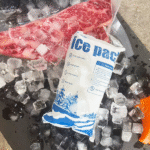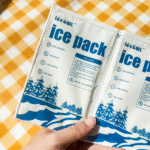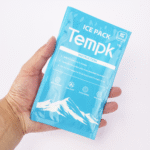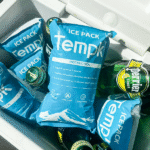How to Use Dry Ice for Coolers and Ensure Safe Shipping: Un guide complet
Dry ice is a powerful cooling solution that plays a crucial role in cold chain logistics. It ensures the safe transport of perishable goods, ranging from frozen foods to pharmaceuticals. Understanding how to handle dry ice effectively is essential for anyone shipping temperature-sensitive items. This guide will walk you through the best practices for using dry ice in coolers, Assurer la sécurité, efficient shipping, and maintaining product integrity.
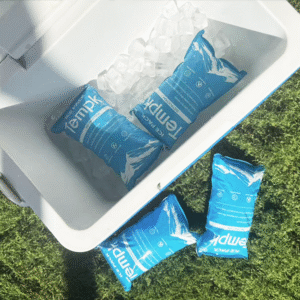
-
What dry ice is and how it works for coolers.
-
The best practices for using dry ice in coolers.
-
How to safely ship products with dry ice.
-
Common mistakes to avoid when using dry ice for shipping.
What Is Dry Ice and How Does It Work for Coolers?
La glace sèche est la forme solide de dioxyde de carbone (CO2), which sublimates directly from a solid to a gas at -78.5°C (-109.3°F). This sublimation process makes it an ideal cooling agent, as it maintains a very cold environment without the mess of water residue left by regular ice.
Principaux à retenir:
-
Dry ice absorbs heat from its surroundings, maintaining a very cold environment.
-
It’s perfect for shipping temperature-sensitive goods like frozen foods, vaccins, et des échantillons biologiques.
-
Dry ice can keep items frozen or at low temperatures for extended periods, making it indispensable for long-distance shipping.
Why Use Glace sèche pour les glacières in Shipping?
Dry ice is preferred over regular ice for several reasons:
1. Longer Cooling Time:
Dry ice maintains lower temperatures for much longer, souvent jusqu'à 24-48 heures, depending on the quantity used and the cooler’s insulation. Contrairement à la glace d'eau, which melts and loses cooling power quickly, dry ice continues to absorb heat without turning into a liquid.
2. Pas de résidu d'eau:
Regular ice melts into water, potentially compromising the packaging and causing items to become soggy. Dry ice sublimates into a gas, leaving no water behind. This makes it particularly useful for shipping food, médicaments, et autres biens sensibles.
3. Efficiency for Long-Distance Shipping:
For international or overnight shipments, dry ice ensures your goods remain within the required temperature range, eliminating the risk of thawing or spoilage during transit.
Meilleures pratiques pour l’utilisation de glace carbonique dans les glacières
1. Assurer une bonne ventilation:
Lorsque vous utilisez de la glace sèche, it’s essential to ventilate the cooler or shipping box. La glace sèche sublimait le dioxyde de carbone, which can displace oxygen in an enclosed space, posing significant health risks, y compris la suffocation. Always ensure your cooler has vents to release the gas safely.
2. Choisissez le bon emballage:
Select insulated coolers or boxes specifically designed to handle the extreme cold of dry ice. To further protect your items, consider double-boxing, surtout pour les expéditions longue distance, to minimize temperature fluctuations.
3. Use Correct Quantities:
The amount of dry ice required depends on the shipment’s duration and the goods being shipped. As a general rule, utiliser autour 5-10 pounds of dry ice for most shipments. For longer transit times, increase the amount accordingly.
Key Safety Considerations for Dry Ice Shipping
1. Handling with Care:
Dry ice can cause severe burns, so always wear insulated gloves when handling it. Direct contact with skin can lead to frostbite.
2. Transportation Regulations:
Shipping with dry ice is regulated by law. Ensure you’re aware of the weight limits (généralement 5.5 lbs per package), as well as the need for proper labeling. Packages containing dry ice must be clearly marked with the appropriate hazardous materials labels to ensure safety.
3. Étiquetage et documentation:
Correct labeling is essential for dry ice shipments. Ensure that your package includes labels such as “Glace sèche” and the weight of the dry ice used. This ensures that handlers are aware of the potential risks and can take appropriate precautions.
How to Ensure Safe Shipping with Dry Ice
Selecting the Right Cooler
Choosing the correct cooler is crucial for maintaining the efficiency of dry ice during shipping:
-
Styrofoam Coolers: Ideal for short-distance shipments, these coolers provide decent insulation but may not be sufficient for long-distance shipping.
-
Thermal Insulated Boxes: These boxes are designed for cold chain shipping, providing higher insulation levels and extended cold retention. They’re perfect for long-distance shipments.
-
Pre-cooling Your Cooler: Avant d'ajouter de la glace sèche, it’s beneficial to cool the container using gel packs or by freezing it overnight. This extra step helps maintain a consistent cold temperature for longer periods.
La ventilation est la clé
Proper ventilation is critical when using dry ice. Comme la glace sèche sublime, it turns into carbon dioxide gas. Sans ventilation adéquate, the pressure inside the cooler can build up, leading to dangerous situations, including the possibility of the container bursting. Ensure that the cooler or box has vents to allow the gas to escape.
Calculate the Amount of Dry Ice
The amount of dry ice needed varies depending on the size of the cooler and the duration of the shipment. A general rule of thumb is:
-
Pour les expéditions 24h / 24: Use approximately 5 pounds of dry ice for every 5-10 pounds of perishable goods.
-
Pour les expéditions plus longues: Ajouter 1-2 pounds of dry ice for every additional 24 heures de transit.
Use the Correct Packaging Materials
When packing dry ice in coolers, use the appropriate materials to avoid mishaps:
-
Polyethylene Bags: These bags are ideal for containing the dry ice while allowing it to sublimate.
-
Emballage isolé: Ensure that your packaging materials—such as foam or double-walled cardboard boxes—are designed to contain the dry ice and reduce its escape, helping to maintain the cold longer.
Packaging Type and Duration
| Type d'emballage | Insulation Type | Idéal pour | Expected Duration |
|---|---|---|---|
| Styrofoam Cooler | Expanded polystyrene | Short-distance | 12-24 heures |
| Thermal Insulated Box | Foam or vacuum-sealed | Longue distance | 24-72 heures |
| Polyethylene Bag | Flexible plastic | Direct contact | 12-48 heures |
Avoid Common Mistakes When Shipping with Dry Ice
1. Not Labeling Correctly:
Always ensure that your package has the necessary labeling, y compris “Glace sèche” and the weight of the dry ice used. Incorrect labeling can lead to delays or mishandling.
2. Exceeding Shipping Limits:
Different carriers have different rules regarding dry ice weight limits, typically 5.5 lbs. Always check the regulations for your specific carrier before shipping.
3. Using Incorrect Insulation:
Using poor-quality insulation or a non-ventilated container can lead to the dry ice sublimating before your shipment arrives. This will result in the goods arriving warm and potentially spoiled.
2025 Trends in Dry Ice Shipping for Coolers
The cold chain logistics industry continues to evolve, with a focus on improving safety, efficacité, et durabilité. New trends are emerging that promise to revolutionize how dry ice is used in shipping:
Derniers développements dans le transport de glace carbonique
-
Emballage intelligent: Emerging smart packaging technologies now allow real-time monitoring of temperature and humidity, enabling businesses to track shipments more effectively.
-
Alternatives durables: As the demand for eco-friendly solutions increases, there is growing interest in sustainable alternatives to dry ice, such as hybrid cooling packs.
-
Regulatory Changes: Shipping regulations are tightening, and more countries are adopting stringent environmental and safety laws for dry ice transportation.
Consumer and Market Insights
With the rise of e-commerce and the increasing demand for fast, reliable shipping, the use of dry ice for cooling and shipping remains essential. As businesses prioritize fast, reliable delivery, dry ice continues to be one of the most reliable methods for preserving temperature-sensitive items.
Questions fréquemment posées (FAQ)
Q1: What is the maximum amount of dry ice I can ship?
The general limit for dry ice is 5.5 lbs per package, but it varies by carrier. Always check the specific regulations of the shipping company you’re using.
Q2: Comment disposer de la glace sèche?
Allow the dry ice to sublimate in a well-ventilated area. Never dispose of it in an enclosed space, as the gas can be hazardous.
Conclusion et recommandations
To successfully use dry ice for coolers and ensure safe shipping, it is vital to follow best practices such as selecting the right cooler, using appropriate packaging, and adhering to shipping regulations. Une bonne ventilation, étiquetage, and safety precautions will help ensure your shipment arrives in optimal condition.
Next Steps for Your Business
-
Review Your Shipping Process: Ensure that dry ice is integrated effectively into your shipping processes.
-
Optimize for Efficiency: Implement the latest advancements in cold chain logistics to improve safety and reduce costs.
-
Partner with Experts: Work with logistics providers who specialize in cold chain and dry ice shipping to ensure the best possible results.
À propos du tempk
Et tempk, we specialize in providing cold chain solutions tailored to your shipping needs. With a focus on quality, sécurité, et durabilité, our products are designed to help you achieve optimal freshness and safety for your temperature-sensitive products.
Consult with us for expert advice on dry ice shipping and optimizing your cold chain logistics.

















